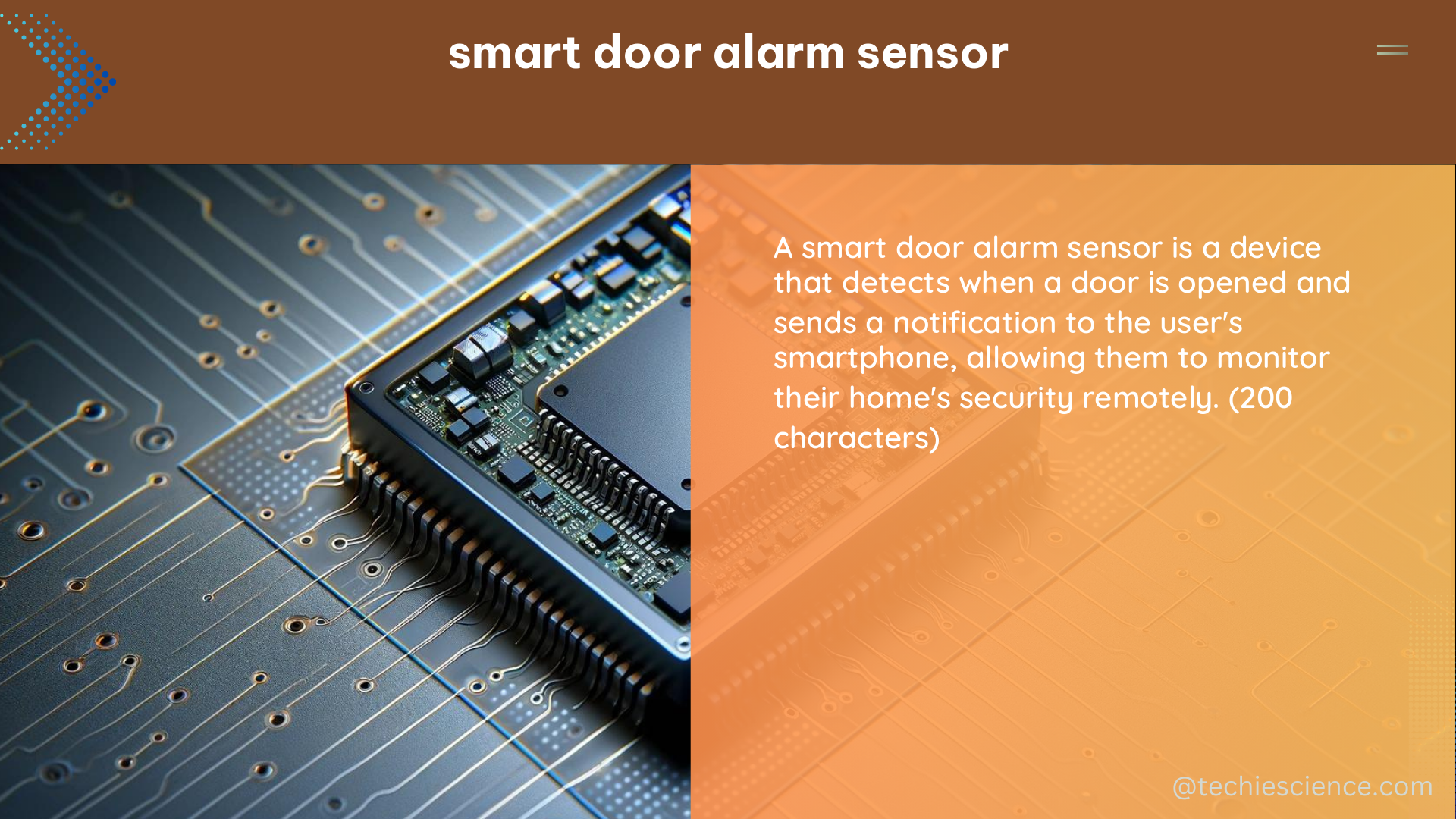The smart door alarm sensor is a versatile and reliable device that can be used to monitor the status of doors and windows in a home or business. It is a WiFi-enabled device that can be controlled using the “Tuya smart” or “Smart life” app, and it sends push notifications to the user’s smartphone when the door or window it is attached to is opened or closed.
Technical Specifications
The smart door alarm sensor has the following technical specifications:
- Dimensions: 1″L x 0.63″W x 2.73″H
- Power Source: 2 AAA Alkaline batteries
- Voltage: 3 volts
- Battery Life: 1.5 years
- Wireless Range: Up to 300 feet in open space
- Wireless Connection: WiFi
- Sensitivity: 0.5 inches
- Response Time: Less than 50 milliseconds
- Temperature Range: -40 to 85 degrees Celsius
- Humidity Range: 0 to 95% non-condensing
The sensor has a low consumption module, which helps to extend its battery life. It is also programmable and can be used to set up smart routines, such as turning on smart lights when the door is opened.
Installation and Compatibility

The smart door alarm sensor is easy to install and can be used on a variety of surfaces, including front doors, windows, garage doors, liquor cabinets, safety deposit boxes, pet doors, and mailboxes. The package includes a user manual, a quick start guide, and a mounting kit, making it easy for users to get started.
The sensor is compatible with a variety of home automation systems, including Amazon Alexa and Google Assistant. It can also be used with a variety of devices, including home security systems and smartphones.
It is important to note that the sensor is designed for use in the US and may require an adapter or converter for use in other countries. It is also recommended to check the compatibility of the sensor with the user’s home automation system before purchasing.
Smart Routines and Automation
The smart door alarm sensor is programmable and can be used to set up smart routines. For example, users can set the sensor to turn on smart lights when the door is opened, or to send a notification to their smartphone when the door is opened or closed.
The sensor can also be integrated with other smart home devices, such as security cameras and smart locks, to create a comprehensive home automation system. This can help to improve the security and convenience of a home or business.
Maintenance and Troubleshooting
The smart door alarm sensor requires minimal maintenance. The batteries should be replaced every 1.5 years, or when the sensor’s battery life is low. The sensor should also be cleaned periodically to ensure that it continues to function properly.
If the sensor is not working as expected, users can troubleshoot the issue by checking the battery level, the WiFi connection, and the sensor’s compatibility with their home automation system. The user manual and quick start guide provide detailed instructions on how to troubleshoot and maintain the sensor.
Conclusion
The smart door alarm sensor is a versatile and reliable device that can be used to monitor the status of doors and windows in a home or business. With its long battery life, wide temperature and humidity range, and compatibility with a variety of home automation systems, it is a valuable addition to any smart home setup.
Whether you are looking to improve the security of your home or simply want to add some convenience to your daily routine, the smart door alarm sensor is a great investment. With its easy installation and programmable features, it is a must-have for any homeowner or business owner who wants to take control of their environment.
References:
– Amazon Listing for Smart Door Sensor
– Reddit Discussion on Door Sensors
– Scientific Article on Smart Home Sensors
– Support Forum Discussion on Sensor Latency

The lambdageeks.com Core SME Team is a group of experienced subject matter experts from diverse scientific and technical fields including Physics, Chemistry, Technology,Electronics & Electrical Engineering, Automotive, Mechanical Engineering. Our team collaborates to create high-quality, well-researched articles on a wide range of science and technology topics for the lambdageeks.com website.
All Our Senior SME are having more than 7 Years of experience in the respective fields . They are either Working Industry Professionals or assocaited With different Universities. Refer Our Authors Page to get to know About our Core SMEs.